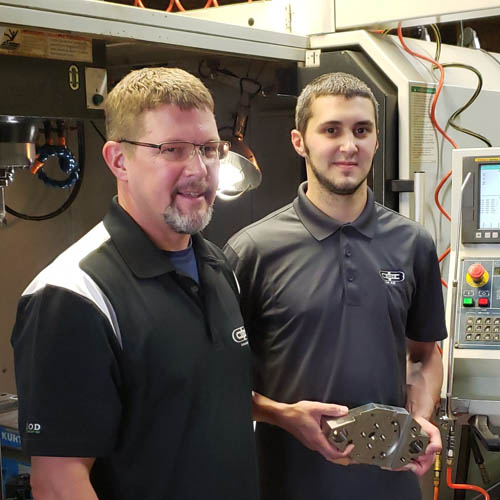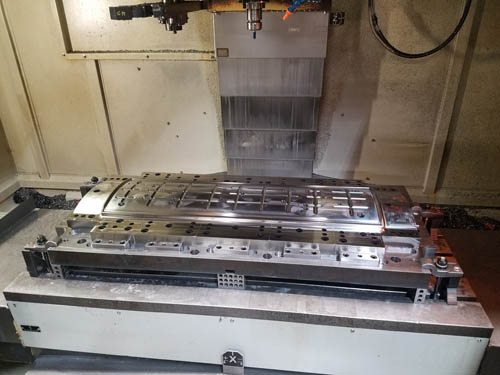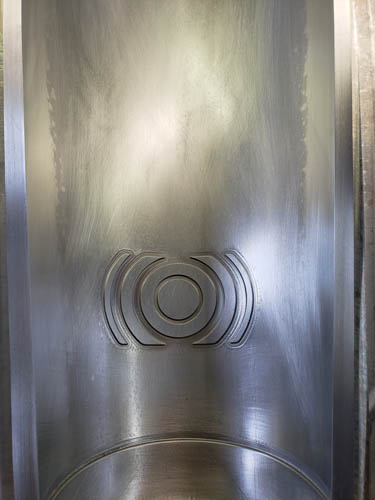Aerospace specialist C3 CNC
Aerospace Specialist C3 CNC is a Precision Job Shop that uses WORKNC to Boost Efficiency and Maintain High Standards While Meeting a Variety of Unique Demands
Small-but-mighty precision job shop C3 CNC meets a wide range of customer demands by combining teamwork with technologies that boost efficiency and help maintain high standards.
C3 CNC opened its doors in Belding, Michigan, nearly 10 years ago, when its owners applied their decades of manufacturing experience to a venture of their own. Since then, the company has served numerous industries, including aerospace, automotive, defense, and medical, and has produced parts for green technologies, recreational vehicles, racing, sports equipment, and more.
“We’re a job shop, so we do anything from furniture parts and simple 2D tool-and-die blocks to complex mold details and precision aerospace parts,” said C3 CNC Programmer Austin Bennett, who has worked at the company co-founded by his father, William “B.J.” Bennett, for four years. “Most of our experience is in the aerospace industry — where we get into tolerances of plus or minus a .0001” — so we’re especially good in that department.”
“Ultimately, we have to view technology as a partnership that pairs the skills we bring to the table with the most efficient manufacturing processes,” Bennett said. “By working with WORKNC, we’re able to provide high-quality details and parts to our customers at an affordable cost.”
Austin Bennett, CNC Programmer
The production of molds and parts with fine finishes are additional strengths of the shop’s four-member team. “What sets us apart is probably the variety of stuff that we’re capable of doing and the quality, the attention to detail,” Bennett said. “Being a smaller shop, we’re a close team that can pay attention to the parts we run.”
To produce its wide variety of parts, C3 CNC has used the WORKNC computer-aided-manufacturing (CAM) solution since the company’s inception. Today, the system is used to program the shop’s four 3-axis CNC mills, and its computer-aided-design (CAD) functionality is used to make changes to customer-provided solid models as needed.
Programming begins with identifying part features to be machined, and WORKNC users are free to choose between manually selecting part features — such as holes, pockets, and chamfers — or using the system’s automatic feature-finding option. Based upon the programming preferences of the user, toolpath can then be automatically or manually applied to selected features.
“WORKNC has parameters that you can set in order for it to find certain features,” Bennett said. “I basically just set all my parameters to where it will automatically find as many of the features as possible. I then go in and measure all the features and make sure it matches a print that I typically have in front of me for that part, and then select the tooling and the toolpath to create those features.”
For programming holes, C3 CNC uses the WORKNC drilling manager, which is used to detect holes automatically and to display associated hole data in a window that enables users to manage center-drilling, drilling, tapping, boring and thread-milling operations. The drilling manager is especially helpful with jobs that require holes of varying tapers and depths.
“When it comes to making holes, we can just highlight our model and the drilling manager will automatically locate all the holes and cylindrical features in our parts,” Bennet said.
C3 CNC selects its cutting tools from a virtual tooling library within WORKNC that reflects the inventory of the shop. This saves programming time and ensures greater accuracy when the job is simulated before being sent to the floor. “If I didn’t have the tool library, I would have to draw my tools each time,” Bennet said. “Having them saved in a database definitely saves a lot of time.”
When it comes down to making chips, C3 CNC utilizes specialized roughing cycles provided by WORKNC, most often the global roughing and re-roughing cycles, and occasionally the Waveform roughing strategy.
Designed for high-torque milling machines capable of removing large amounts of stock, global-roughing toolpath removes significant amounts of material in a single operation. Re-roughing operations allow users to apply consecutively longer cutting tools for additional operations; shorter cutters are used first to quickly remove large amounts of material without chatter.
The Waveform roughing strategy is a high-speed machining technique that removes large amounts of material and maintains a constant tool-cutting load by ensuring that the tool engagement with the material is consistent throughout the cycle. The toolpath moves in a smooth path to avoid sharp changes in direction, which maintains the machine tool’s velocity.
“I can use the Waveform roughing with a smaller stepdown and a larger stepover, or small stepovers and large depth of cut, and it gives me different parameters for both approaches,” Bennett said. “If you set the parameters correctly, it increases the length of time that the tool is engaged.”
For his finishing cycles, Bennett typically chooses planar finishing toolpath or combined z-level and optimization toolpath.
Planar toolpath is designed to machine in parallel passes following the surface profile of the part, with a constant stepover in the plane view. Z-level finishing toolpath is most helpful when machining parts with vertical or significantly curved shapes and is particularly adapted for use with bull-nose cutters on all kinds of materials.
Z-level finishing and optimization toolpath can be programmed in a single operation, which reduces time spent programming, as well as the risk of tool breakage linked to the possible incorrect definition of minimum pockets. When programming a combined z-level finishing and optimization toolpath, the minimum value for pockets is applied to both toolpaths.
To cut programming time and enforce production consistency, C3 CNC uses the WORKNC “sequences” tool, which allows users to save and apply their best practices. Essentially a series of job parameters, sequences are saved for specific types of operations so that they can be reapplied to new jobs that have similar or identical parameters. Consistently using sequences helps users to continuously capitalize on previous programming jobs and to set shop standards for how jobs will be performed.
“You create a destination folder where you want to save all of your sequences, and when you want to save a sequence, you highlight it and save it to that destination folder with a name that identifies it,” Bennett said.
Programs are simulated to ensure that crashes will not occur before jobs are sent to the shop floor. WORKNC simulations provide detailed virtual representations of how the job will be performed, including the machine tool, fixtures, tooling and tool-holders.
“We have a tool-holder library just like our cutting-tool library, and we can define which holder we’re using for a specific tool and run a holder collision check to make sure that it isn’t going to crash before we start the job.”
Using technologies that help C3 CNC deliver high-quality parts at competitive prices ensure that the company is able to meet evolving, and often complex, demands.
“Ultimately, we have to view technology as a partnership that pairs the skills we bring to the table with the most efficient manufacturing processes,” Bennett said. “By working with WORKNC, we’re able to provide high-quality details and parts to our customers at an affordable cost.”
About the company
Name: C3 CNC
Website: www.c3cnc.com
Business: Precision job shop
Key benefits achieved
- Greater ease in identifying and measuring part features.
- Simplification of hole programming and driling.
- Ability to save machining sequences for the retention and consistent application of best practices.













